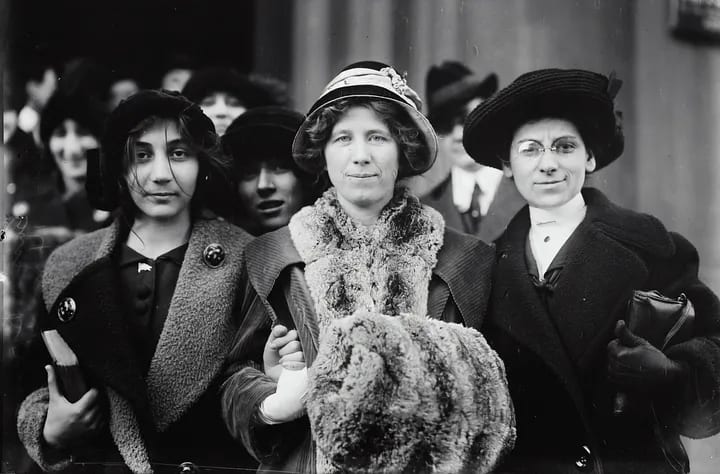Activists Road-Blocking: Is it Okay?
A Philosophical and Ethical Inquiry

In recent years, the world has witnessed a surge in a particular form of activism where protesters glue themselves to roads, obstructing traffic and causing significant disruptions in daily life. These actions are typically aimed at drawing attention to urgent issues such as climate change, animal rights, or political injustices. This form of protest has sparked considerable debate, raising questions about its effectiveness and ethical implications. Are these disruptive tactics advancing the activists’ causes, or are they merely aggravating the very people they aim to persuade?
Understanding the Motives
To grasp the motivations behind such extreme forms of protest, it’s essential to understand where they are coming from. Historically, civil disobedience has been a potent tool for change. The Civil Rights Movement utilized nonviolent resistance to combat racial segregation and injustice. Similarly, Gandhi’s nonviolent protests were instrumental in India’s struggle for independence from British rule.
These movements highlighted a fundamental principle:
when legal and political systems fail to address injustices, citizens are morally justified, perhaps even obligated, to disrupt the status quo to enact change.
Today’s activists, inspired by these historical precedents, believe that drastic measures are necessary to highlight issues that are otherwise ignored.
However, the context in which modern activists operate has changed significantly. In an age dominated by 24/7 news cycles, social media, and rapid information dissemination, capturing public and media attention requires increasingly dramatic gestures. Activists resort to road-blocking and similar disruptive tactics because they feel that traditional methods of protest no longer suffice to break through the noise.
Ethical Perspectives

On one hand, these activists are exercising their right to protest and seeking to draw urgent attention to critical issues. On the other hand, their actions can cause harm and inconvenience to ordinary people, potentially alienating the very allies they need.
Utilitarian Perspective: Utilitarianism, which advocates for actions that maximize overall happiness, evaluates these protests based on their outcomes. If the disruption leads to significant positive change, such as robust climate policies or greater public awareness, the temporary inconvenience may be justified. For instance, if blocking a major highway for a few hours leads to policy changes that mitigate climate change, thereby saving countless lives and ecosystems in the long term, utilitarians might argue that the action is morally justified. However, if the protests merely frustrate the public without yielding concrete results, they could be deemed unethical.
Deontological Perspective: From a deontological standpoint, which focuses on the morality of actions themselves rather than their consequences, the argument shifts. Blocking roads and causing public disruption can be seen as inherently wrong because it disrespects individuals’ rights to move freely and go about their daily lives. This perspective emphasizes that ends do not always justify means, and the ethicality of protest tactics should be evaluated independently of their outcomes. For deontologists, the right to protest must be balanced with respect for the rights of others, and actions that cause harm or inconvenience to innocent parties may be considered morally unacceptable regardless of their intentions.
Virtue Ethics: Virtue ethics, which focuses on the character and intentions of the moral agent, adds another layer of complexity. From this perspective, the intentions behind the activists’ actions are crucial. If they are genuinely motivated by a desire to promote the common good and address pressing moral issues, their actions may be seen as virtuous. However, if their tactics are perceived as reckless or self-serving, they may be seen as lacking in virtue. The challenge for activists is to demonstrate that their disruptive tactics are guided by a sincere commitment to justice and not by a desire for attention or notoriety.
The Impact on Public Perception
While disruptive protests can bring immediate media attention, they risk alienating the broader public. For instance, commuters stuck in traffic jams or emergency services delayed by roadblocks may develop negative views towards the cause, regardless of its merit.
In my exploration of Edward Bernays’ work, as discussed in “The Engineering of Consent,” I highlighted how public opinion can be shaped by strategic communication. Bernays demonstrated that public perception is malleable and can be engineered through thoughtful messaging and media strategies. Activists today need to balance their need for dramatic gestures with the necessity of maintaining public support.
Bernays’ principles show us the importance of crafting messages that resonate emotionally with the public while being careful not to alienate potential supporters. The effectiveness of a protest depends not only on the visibility it achieves but also on the public’s emotional and rational response to it. A successful activist campaign must engage the public’s empathy and sense of justice while avoiding actions that provoke anger or resentment.
The Psychological Dynamics
Research in social psychology suggests that people are more likely to support a cause if they feel personally connected to it. However, when protests disrupt their daily lives, this connection can turn into resentment. This psychological backlash can undermine the activists’ goals by creating a perception of the movement as being out of touch with the concerns of ordinary people.
Moreover, the phenomenon of cognitive dissonance comes into play. People who are inconvenienced by protests may experience a dissonance between their support for the cause and their frustration with the tactics. To resolve this dissonance, they may rationalize their opposition to the protest by devaluing the cause itself. Thus, the activists’ methods can inadvertently push people away from the very issues they seek to highlight.

The Role of Media
The media’s role in shaping public perception of these protests cannot be overstated. Sensationalist coverage can amplify the disruptive aspects of the protests while neglecting the underlying issues that motivated them. This skewed representation can lead to a distorted public understanding, where the focus shifts from the cause to the controversy.
Activists must therefore engage in strategic communication to ensure their message is not lost in the noise. This involves working with sympathetic media outlets, using social media platforms effectively, and crafting clear, compelling narratives that highlight the urgency and legitimacy of their cause. By controlling the narrative, activists can mitigate the risk of negative public perception and build broader support for their movement.
A Balanced Approach
Activists might consider a more balanced approach that combines impactful, yet less disruptive, forms of protest with strategic media campaigns. This could involve symbolic acts, digital activism, and engaging storytelling that highlight their causes without alienating potential supporters.
Furthermore, building a dialogue with policymakers, the media, and the public can build a broader base of support. As I have often discussed in my works, particularly in “Power & Ethics,” effective change stems from a combination of moral conviction and pragmatic strategy. Activists must navigate the fine line between compelling urgency and maintaining public goodwill.
Digital platforms offer a powerful tool for activism. Online petitions, social media campaigns, and virtual demonstrations can reach a wide audience without causing physical disruption. These methods can complement physical protests by maintaining public engagement and pressure on policymakers while minimizing public inconvenience.

Final Words
The activists gluing themselves to roads are undoubtedly driven by a profound sense of urgency and moral conviction. However, the ethicality and effectiveness of their tactics remain contentious. While disruptive protests can force society to confront uncomfortable truths, they must be carefully calibrated to avoid alienating the public. Balancing dramatic action with strategic communication and public engagement may offer a more sustainable path to achieving their noble goals.
In the end, the success of any movement hinges not just on the passion of its activists but on its ability to resonate with and mobilize a broad base of support.
Activism, at its core, is about challenging the status quo and pushing for a better world. However, it is also about building bridges, nourishing understanding, and creating a shared vision of the future. By combining bold actions with thoughtful engagement, activists can inspire not only awareness but also meaningful change.
About the Creator
Enjoyed the story? Support the Creator.
Subscribe for free to receive all their stories in your feed. You could also pledge your support or give them a one-off tip, letting them know you appreciate their work.





Comments
There are no comments for this story
Be the first to respond and start the conversation.